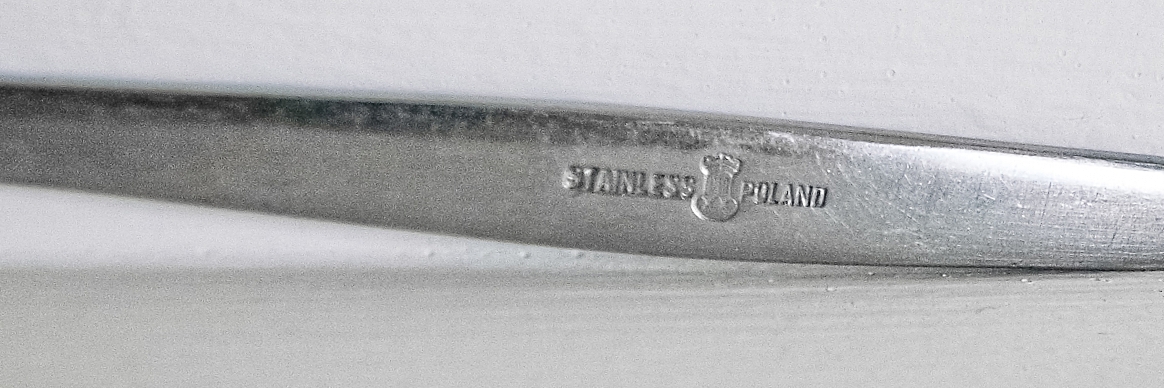Sometimes an idea can be too good for its own good. If outstanding planning or design is wasted on a mismanaged commodity, then it’s not only a loss—of revenue and recognition—for the creator, but also a loss to the person whose life might have been made easier or more resplendent through the application of the creation in question. I’m talking about that betrayal-tinged sense of frustration when your neighborhood bakery stops carrying your favorite loaf of bread, or when IKEA stops selling something you assumed would be available indefinitely, like those great Favorit nonstick frying pans in three sizes, or tear-drop shaped dipping sauce dishes in two shades of grey.
The story of my favorite fork is a bit different: most likely, it is a vintage piece, produced with no attention to branding under the cloak of communism in Poland. Judging by the unusually shallow-set tines, it is also probably not the basic dinner fork from the original place setting, but maybe the one meant for fish, though that’s not certain: modernist design saw its share of stylized objects pushing the limits of what is prototypical. It came into my possession several years ago at a thrift store in Copenhagen, Denmark. I found it while rummaging through the kitchenware in search of distinctive pieces to use in creating harmonious but not matchy table settings, like those typical of the Japanese dining tradition.
In no time at all this fork became my absolute favorite, both for its sleek aesthetic and for its ergonomic superiority over every other adult-sized fork in my kitchen drawer. The lightweight, streamlined grip doesn’t weigh so much as to make the fork fall off the plate—but it’s still comfortable to hold. And I appreciate this welcome stylistic counterpoint to the ubiquitous Data cutlery range, which I was using for years and still seem to encounter in at least half the homes and a quarter of the restaurants I visit.
I admit, I’m writing this in the hope that someone might read it and help me locate a full set to go with my one lone fork. But so far, I haven’t been able to get a lead on the designer, the producer, or any distributors, past or present. The only information on the fork itself is that it was made out of stainless steel somewhere in Poland; the barely-legible castle tower logo doesn’t ring any bells. Any information that could help lead me to more of this exceptional cutlery will be greatly appreciated. Rewarded, even—especially if you are interested in some cutlery from IKEA’s Data collection.

